What Recovery Really Looks Like
Healing Isn’t Linear
We’re often sold a version of healing that’s clean, tidy, and triumphant. The kind where you struggle, then seek help, and then, after a set number of therapy sessions or self-care Sundays, you’re back to normal. Stronger, wiser, glowing with gratitude.
But if you’ve ever walked the road of recovery, through anxiety, depression, burnout, grief, trauma, you know that’s not how it works.
Healing isn’t linear. It’s unpredictable, exhausting, slow, and often incredibly lonely.
It can be beautiful, yes. It can be full of insight and growth. But it’s also a slog. A long walk with no map. A process that asks for your patience on the days you have none left.
The Fantasy of the Upward Curve
We love a story with a beginning, middle, and satisfying end. And for mental health, that often sounds like:
“I wasn’t okay, I reached out, and now I’m thriving.”
But the real story might be more like:
“I wasn’t okay. I reached out. It helped a bit. Then I dipped again. Then I got a bit better. Then I lost momentum. Then I tried something else. Then I learned to live with it differently.”
That’s not failure. That’s what recovery actually looks like.
The idea that healing moves in a straight line, or that progress should be obvious and measurable, is not just inaccurate. It’s damaging. It leaves people feeling like they’re doing something wrong when the low days return. It whispers, “If you were really getting better, you wouldn’t feel like this anymore.”
But here’s the truth: relapse is not the opposite of recovery, it’s part of it.
Setbacks Don’t Cancel Progress
One of the most painful parts of recovery is the return of symptoms you thought you’d moved past. Maybe you’ve had weeks of clarity and calm, and suddenly the fog returns. You can’t get out of bed. You’re dissociating in meetings again. The anxiety is back.
And the voice in your head says: “You’re back at square one.”
But you’re not.
You’re returning to a familiar place with new tools, new insight, new resilience. Maybe you’re recognising the signs earlier. Maybe you’re able to name what’s happening. Maybe you reach out instead of shutting down.
That’s not the same as where you were before. That’s progress, even if it doesn’t feel like it.
The Messy Middle is Still Recovery
We talk a lot about being “in recovery” in the mental health space, but rarely do we unpack what that really means. Recovery isn’t just about getting better. It’s about learning to live well, even when things aren’t perfect.
It’s sitting with uncomfortable emotions without letting them consume you.
It’s finding moments of connection on days when your instinct is to isolate.
It’s remembering that feeling low doesn’t mean you’ve lost everything you’ve gained.
It’s not about constant improvement. It’s about building capacity: to cope, to bounce back, to find meaning in the mess.
And often, it’s in that “messy middle” where the most profound healing happens, not because everything is okay, but because you’re learning how to be okay even when it’s not.
The Psychology Behind Non-Linear Healing
From a clinical perspective, recovery doesn’t follow a straight trajectory because the brain doesn’t heal in a straight line.
Trauma, depression, and anxiety disrupt core functions like sleep, cognition, memory, and motivation. Healing these systems takes time, and it’s often non-sequential.
There’s also something psychologists call the “extinction burst”, where symptoms briefly intensify just before they begin to decrease for good. It’s the brain’s way of holding on to a familiar pattern before it lets go.
What this means in practice is that setbacks are sometimes signs of deeper healing, not failure. The wobble before the recalibration.
Understanding this doesn’t take away the pain, but it might help you meet it with less fear.
Shame Has No Place in Recovery
There’s a particular kind of shame that clings to mental health recovery. The kind that says:
- “I should be better by now.”
- “I’m a burden.”
- “Other people have it worse.”
This shame thrives in silence. It tells you to keep your struggle private. To smile at work. To push through. To wait until you’re really broken before you ask for help.
But you don’t need to be at rock bottom to deserve support. You don’t need to perform your pain for it to be valid.
You are allowed to struggle quietly. You are allowed to seek help early. You are allowed to talk about your good days and your hard ones in the same breath.
Resilience Isn’t Being Unbreakable, It’s Learning to Bend
At PsycApps, we talk a lot about resilience, but not in the “keep going no matter what” sense. True resilience, psychologically speaking, is about adaptability. It’s about emotional flexibility. It’s about knowing when to rest, when to ask for help, when to start again.
Our CPD-certified Resilience Development Programme isn’t built on toxic positivity or “power through” culture. It’s built for real people, with real lives, who need real tools to navigate the ebb and flow of recovery.
Because healing isn’t about erasing the hard parts. It’s about creating enough inner space to hold them without collapsing.
Gentle Reminders for the Journey
If you’re in the midst of recovery, whatever that looks like for you, here are some things worth remembering:
- You are not your symptoms. They are real, but they are not all of you.
- You can have bad days in recovery and still be recovering.
- You don’t need to do it alone. Support is not a luxury, it’s a human need.
- Progress is sometimes invisible. The hardest work happens underneath the surface.
- You are allowed to start again. As many times as it takes.
Healing is a Path, Not a Destination
There is no finish line to mental health recovery. No certificate of completion. No moment where everything is “fixed.”
What there is, though, is growth. Deep, uneven, transformative growth. There are mornings where you wake up and realise you’re no longer afraid of the day. There are conversations that feel lighter. Laughter that comes easier. Patterns you start to change, even if slowly.
That is healing. That is enough.
Explore our CPD-Certified Resilience Development Programme to start your journey today.


